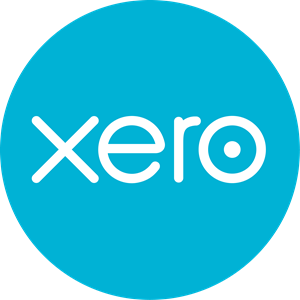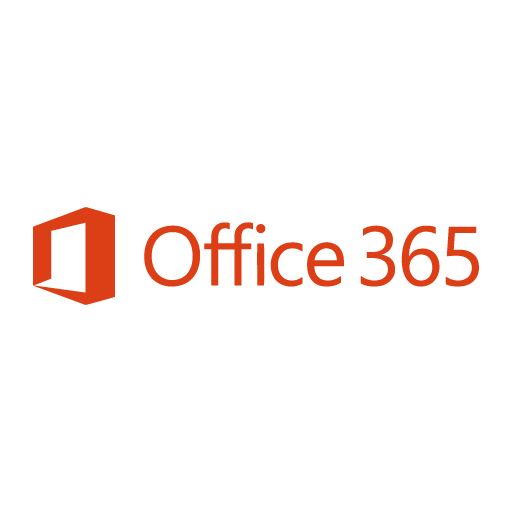How My Daughter's Leukemia Diagnosis Gave Me A New Perspective
Hello! Who are you and what business did you start?
Hi, my name is Nick Swan and I am the founder and single person bootstrapper behind www.sanitycheck.io. It’s a SaaS tool that helps you rank your website higher in Google.
It takes the data in Google Search Console and presents it in more meaningful ways so you know what to do to get more organic traffic from Google. If you are an agency working on multiple sites it also helps save you a huge amount of time.
Customers include marketing and seo agencies, big ecommerce sites, and other software businesses.
While getting ready to launch paid plans for the tool, our eldest daughter who was only 3 years old at the time, was diagnosed with Leukemia. This put work and life into perspective and made me have to really concentrate on tasks when I did have time to work.

Our family outside the ‘world famous’ Bude Tunnel. Me, Isabel, Sophie, Charlie and Megan. We move to Bude, a small seaside town in Cornwall, UK about 3 years ago.
What's your backstory and how did you come up with the idea?
I have been building websites and doing SEO since around 1998 (yes I’m 39!) which was pre-Google. The good old days of Alta Vista, Excite, keyword stuffing and transparent text on pages!
I studied Software Engineering at University and helped fund this by building websites and doing SEO in the evenings and spare time.
After a few years of employment after leaving University, I co-founded a business that built tools and extensions for Microsoft SharePoint. Part of my role in this business was looking after the marketing website and so I continued to work in the SEO space.
Upon finishing working with SharePoint I started a vouchers/coupon site in the UK that through good timing (Google’s Penguin Algorithm was just rolling out so tons of existing sites got penalized in the search results) and some good SEO it started to rank really well.
At this time Google Search Console was the definitive place to find out which keywords your site and pages were ranking for, especially since Google Analytics marked most keywords as [not provided].
The main issue at the time was Google Search Console only showed the last 3 months worth of data (in January 2018 they updated this to 16 months of data).
Being a developer, and as Google Search Console had an API, I decided to write some code to archive this data away so I can run reports on it over longer periods of time.
Once it was up and running, with a really basic Bootstrap Theme, I posted about it on a few SEO communities I was a member of and people started to sign up. It was free at the time, and definitely an MVP, but it accomplished the first goal - which was to archive the data.
Once the data was being stored in the database I realised there were lots of interesting things we could do with it.
Whenever I made a change to a page to see if I could improve it’s ranking I would track the results in a spreadsheet. Once you start changing multiple pages it can become a time-consuming task to log all of this data. I was able to build an SEO testing suite within SanityCheck that allowed you to create an SEO Test when you made a change to a page - and SanityCheck automatically tracked the change in position, clicks etc. This literally saved me hours each day.
At the time of having SanityCheck in a free beta I was earning a living from the voucher/coupon site, so this SEO tool was just a side project that was ‘scratching my own itch’. I was using it on a day to day basis to help speed up my own SEO work so even if it never fully developed into a chargeable product I would have considered it a success.
Take us through the process of designing, prototyping, and manufacturing your first product.
I’m definitely not a designer, so using the Bootstrap framework and templates helps me get projects looking semi-decent! Decent enough to launch at least.

The first version of SanityCheck was simply a bunch of text on a page explaining what it did. It was friends and people who knew me from the SEO community who were first trying the tool so they were doing me a favour as much as anything so it didn’t need a slick design and compelling sales copy.
At this point it was just a tool that was helping me with my day to day SEO work.
Getting feedback from users, and adding more functionality to help automate my own work was making the tool more useful. Six months after launching it as a beta product I decided it was time to start charging for it.
Once SanityCheck start generating some revenue I used a design agency to come up with a proper design for the marketing pages. This has been money well spent as I often get feedback on how good the marketing site looks.
Describe the process of launching the business.
Although I decided to start charging for the product, it was still going to be a side project so I didn’t need it to replace or become a main source of income. I hoped if things took off this would perhaps one day be the case, but there wasn’t the added pressure of it needing to happen straight away.
In the month before the planned charging launch our daughter had a bad cough and complained of aching legs. We just put it down to growing pains. It wasn’t until she had a terrible bruise on her back that we knew something more serious was up. It was only 3 hours from sitting in the doctors surgery, being transferred to hospital, to getting a diagnosis of Acute Lymphoblastic Leukaemia.
The first few days were terrible, as you immediately consider the possibility of one of your children dying. Once we were transferred up to the main treatment centres in our region for paedeatric cancer we were told that our daughter had the most common and treatable type of leukaemia. It would be a 2 year 3 month treatment process with lots of potential side effects and risks, but we certainly felt it was a fight we had a good chance of winning.

Isabel began two weeks of intense treatment where we had to stay up in hospital. Our youngest son was only 4 months old at the time so I did a lot of the initial overnight stays.
Initially I thought I’d have a lot of spare time to work on SanityCheck while Isabel rested and recovered, but it turns out that wasn’t the case! :)

I was either trying to think of ways to entertain a 3 year old who was feeling terrible and hooked up to chemotherapy machines, or I was tired in a chair trying to mentally recover. During those times of rest however - I did do a lot of thinking and planning. Coming up with what was crucial to get done and the approaches to do it. This meant when I did have a chance to work on my laptop I was really productive.
After 2 weeks of hospital stay we were all allowed home to continue Isabel’s treatment at a closer hospital. This still meant daily visits for 3 months which took up most of the day, but I did manage to alternate days between working and doing hospital trips.

I finally managed to get paid plans launched in July 2017 - and had around 10 customers sign up from the initial beta period.
Thankfully Isabel’s treatment has gone really well, and she’s considered low risk. At this time of writing she has around 3 weeks of treatment left and she’s busy planning her 6th birthday and end of treatment plan.
We have been incredibly lucky with Isabel’s diagnosis and how her treatment has gone. Spending time in a children's oncology ward and meeting other families who are going through really difficult times does make you count your blessings and puts everyday things into perspective.
I am certainly a different person from before Isabel’s diagnosis - and it helps me rationalise and calmly deal with things now that I would previously have blown up to be massive problems.
Since launch, what has worked to attract and retain customers?
I have always been honest with the users and customers of SanityCheck. They understand that it is just me behind the code, marketing and support - and they have embraced that and I hope they feel like they have been part of the journey of SanityCheck.
Even during the start of Isabel’s treatment I wrote about it in the email newsletter and apologised if sometimes I was a bit slow in replying to support emails. I will forever remember the emails back from people sending best wishes.
But as people have bought into the journey of SanityCheck - the one thing they like seeing is progress. I try my utmost to release at least one new meaningful feature or report each month. This shows them the tool is progressing and improving, and gives me a reason to contact them.
I always get a few new customers after sending out an email about a new feature which is nice to see immediate pay off from doing the work.
There are lots of SEO communities on Facebook and LinkedIn. I was a member and involved in these long before I started working on SanityCheck, so when I did share my project in them it wasn’t seen as spam. People in these communities are also friends and so recommend SanityCheck whenever someone posts a problem or question which SanityCheck can help solve or answer.
Twitter has great community of SEO people tweeting. I am always updating what I am working on, and promoted Tweets has been a good driver of trial users.
Each community or social media platform has a number of influencers and I have found offering free subscriptions helps get them to recommend the tool. It doesn’t cost me anything, but can help you reach people in a really effective way.
How are you doing today and what does the future look like?
I’ve learnt to take a day at a time. With Isabel’s treatment we can end up in hospital for a few days with zero notice due to an infection.
This has meant I always stay away from long term planning and goal setting. I have tried to do this before - but it always seemed to coincide with an interruption and stay in hospital. I’d feel really frustrated.
So for the past 18 months, and for probably until the end of 2019, I will continue to take a day at a time. I know the kinds of things I want to work on - but it sometimes also comes down to ideas in the moment.
SanityCheck stores a lot of search data away for a site, and every now and again a customer or I will get an idea for a report that I can put together quite quickly. If you can do this at the same time as a topic or idea is being talked about on Twitter or another platform this can help amplify any promotion you do.
SanityCheck isn’t generating enough revenue to support me and my family by itself, so I get an income from some SEO consulting and other projects too.
Having an SEO tool such as SanityCheck helps lend credibility when talking to people about SEO consulting and has certainly helped get some customers. It’s also nice to offer a free subscription of SanityCheck while I am consulting with them and the SEO testing aspect of the tool helps prove the results and benefits the working is bringing.
Doing SEO work is also the best way to get ideas for new features and ways to make SanityCheck better - so I don’t think I’d ever want to give up the consulting work completely. If I did I wouldn’t be using SanityCheck as much myself, and would fall out of touch in terms of how to make the tool useful for people who do work on SEO day to day.
The lifetime value of SanityCheck customers is pretty good as we archive data away for websites the product becomes more useful the longer they use it. One thing I do want to work out better is paid marketing. I put some budget into promoted tweets - but have never really got Google or Facebook Ads to work.
There are a lot of other SEO tools around competing for advertising space - so it’s not a cheap niche for paid marketing but I’m sure I could still do better at it.
Through starting the business, have you learned anything particularly helpful or advantageous?
When I started charging customers I had the basic plan at $10. I have a number of friends who are bootstrapping their own software businesses and have always thought most SEO tools are too expensive and out of reach.
Scratch your own itch. Build something that will help automate or make your job quicker. At least then you always have 1 customer who will love the product.
So I thought I’d be nice and charge just $10 a month.
But growth is slow when only charging this much, and when a customer is only paying you $10 a month it feels as though support is a burden.
I’ve recently put prices up - which hasn’t slowed down growth of total customers at all, and therefore means better MRR each month.
So I’d definitely pick a monthly amount for your product that makes sense for you to spend time supporting that customer.
If I was to start this again, I would pick a monthly price for my base package where the annual total would equal a day of consulting work. That way each new customer would in theory replace a day of consulting - and actually make a meaningful abstract difference. You can have no qualms in the support needs of each customer then as each customer makes a meaningful difference in your life.
What platform/tools do you use for your business?
- Baremetrics - nice to see each new sale become a big increase in annual revenue! Sometimes looking at mrr makes you depressed! :)
- Feature UpVote - tracking user feedback
- Tawk.to - free onsite chat tool.
- Rewardful - affiliate management.
- HotJar - occasional usage when I want to make changes to marketing pages.
What have been the most influential books, podcasts, or other resources?
I’ve got loads…
I’ve got a brother who’s 10 years older than me and has been running his own business since forever, so it feels like self-employment and running my own business was always going to be the path I took.
Back in 2006 when I first co-founded the SharePoint related business the Joel on Software discussion forums were the place to be and a few GeekDinner meetups in London.
These days podcast wise I listen to:
- The Art of Product
- AuthorityHacker Podcast
- Build Your SaaS
- Founder Chats
- Indie Hackers Podcast
- Noah Kagan Presents
- Rogue Startups
- Startups for the Rest of Us
- Selected episodes of The Tim Ferriss Show
A friend and I also have a podcast at www.britstrapped.com - although our calendars don’t always align to be able to keep to a regular schedule.
Books wise. I have read a lot. My problem is remembering what I have read! I always hope the stories and ideas are lodged somewhere in the back of my brain ready for when I need them or influencing my decisions without my realising. Some of my favourites are:
- Fav book ever - Masters of Doom
- Anything by Jim Collins (Good to Great, Great by Choice, etc)
- Essentialism
- Anything you want - Derek Sivers
Business Biography type books such as:
- Hatching Twitter
- American Kingpin
- Elon Musk
- Bad Blood
- The Facebook Effect
- In The Plex
- The Everything Store
- Founders at Work
Loads of Productivity/Psychology type books:
Advice for other entrepreneurs who want to get started or are just starting out?
Scratch your own itch.
Build something that will help automate or make your job quicker. At least then you always have 1 customer who will love the product. It’s likely there others who have the same problems as you - so there’s a potential market.
Whether that market is large enough to support a product that can support you - that’s the bit you need to figure out. But is that how you measure success?
If your product makes your own life easier - that’s pretty successful I’d say.
I’ve tried a number of times to build products for other people. It’s hard to keep the enthusiasm and motivation going (at least for me) when taking that approach. Of course, it works for some - but I will always take the ‘scratch your own itch’ approach now when deciding on future projects.
Are you looking to hire for certain positions right now?
I’ve been involved in co-founding a business that employed 15-20 people before, and I am not sure I want to go that route again.
At the moment, I am happy being a single founder/employee who makes use of specialised contractors for things such as design and copywriting when I need it.

Where can we go to learn more?
On September 7th I’ll be riding from Lands End to John O’Groats to raise money for Clic Sargent who have supported us a huge amount during Isabel’s treatment. You can find out more about the ride and sponsor me here.
If you have any questions or comments, drop a comment below!

Download the report and join our email newsletter packed with business ideas and money-making opportunities, backed by real-life case studies.

Download the report and join our email newsletter packed with business ideas and money-making opportunities, backed by real-life case studies.

Download the report and join our email newsletter packed with business ideas and money-making opportunities, backed by real-life case studies.

Download the report and join our email newsletter packed with business ideas and money-making opportunities, backed by real-life case studies.

Download the report and join our email newsletter packed with business ideas and money-making opportunities, backed by real-life case studies.

Download the report and join our email newsletter packed with business ideas and money-making opportunities, backed by real-life case studies.

Download the report and join our email newsletter packed with business ideas and money-making opportunities, backed by real-life case studies.

Download the report and join our email newsletter packed with business ideas and money-making opportunities, backed by real-life case studies.


























